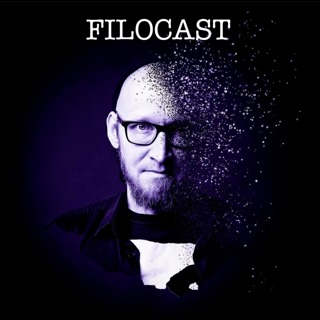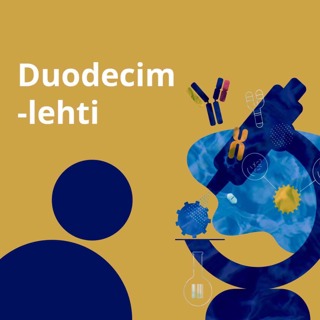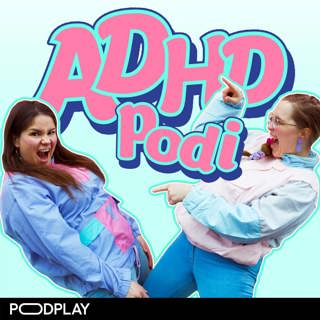
Episode 7 Preview
Wish you could do a real functional analysis but don't think you have the time? Maybe a trial-based FA is just what you need? Next week we'll be discussing some updates to the literature on trial-based FAs and their possible use in the school setting. Articles to read for next week: Lambert, J.M., Bloom, S.E., & Irvin, J. (2012). Trial-based functional analysis and functional communication training in an early childhood setting. Journal of Applied Behavior Analysis, 45, 579-584. doi: 10.1901/jaba.2012.45-579 Austin, J.L, Groves, E.A., Reynish, L.C., & Francis, L.L. (2015). Validating trial-based functional analyses in mainstream primary school classrooms. Journal of Applied Behavior Analysis, 48, 274-288. doi: 10.1002/jaba.208
25 Touko 201610min

Episode 6 - Presession Pairing w/ Dr. Amanda Kelly
Is playing with students before presenting demands the secret to a great work session? We're joined by special guest Dr. Amanda Kelly, Behavior Babe herself, to answer this question with a detailed and in-depth discussion on her presession pairing research. Not only do you get a behind-the-scenes tour of the research process and overcoming participant pitfalls, but also a heated discussion about whether Katie Perry or Angry Birds is the ultimate reinforcer. If you learn one thing this week, its stop grabbing things from our learners! Articles discussed this week: Kelly, A.N., Axe, J.B., Allen, R.F., & Maguire, R.W. (2015). Effects of presession pairing on the challenging behavior and academic responding of children with autism. Behavioral Interventions, 30, 135-156. doi: 10.1002/bin.1408 If you're interested in ordering CEs for listening to this episode, click here to go to the store page. You'll need to enter your name, BCBA #, and the two episode secret code words to complete the purchase. Email us at abainsidetrack@gmail.com for further assistance.
18 Touko 20161h 3min

Episode 6 Preview
We're all jazzed up to announce our very first guest: Dr. Amanda Kelly, the Behavior Babe herself. She'll be joining us on next week's episode to discuss her article on presession pairing. And Jackie congratulates the BCBAs of tomorrow. Articles to read for next week: Kelly, A.N., Axe, J.B., Allen, R.F., & Maguire, R.W. (2015). Effects of presession pairing on the challenging behavior and academic responding of children with autism. Behavioral Interventions, 30, 135-156. doi: 10.1002/bin.1408
11 Touko 20164min

Episode 5 - TAGteach
It's a brand new episode in which we talk about how TAGteach can help Diana to play golf, Jackie to dance in the ballet, and Rob to coach Little League. Will our intrepid hosts master these special skills? All this and Diana learns Japanese while Jackie previews her new Anne of Green Gables podcast. We even manage to talk about these articles! Quinn, M.J., Miltenberger, R.G., & Fogel, V.A. (2015). Using TAGteach to improve the proficiency of dance movements. Journal of Applied Behavior Analysis, 48, 11-24. doi: 10.1002/jaba.191 Persicke, A., Jackson, M., & Adams, A.M. (2014). Brief report: An evaluation of TAGteach components to decrease toe-walking in a 4-year-old child with autism. Journal of Autism and Developmental Disorders, 44, 965-968. doi: 10.1007/s10803-013-1934-4 If you're interested in ordering CEs for listening to this episode, click here to go to the store page. You'll need to enter your name, BCBA #, and the two episode secret code words to complete the purchase. Email us at abainsidetrack@gmail.com for further assistance.
4 Touko 20161h 3min

Episode 5 Preview
In preparation for this week's episode, Rob calls out Jurassic World for its poor representation of clicker training. To balance the scales, we'll be discussing TAGteach and its application in learning motor skills. Listen up, Hollywood! Articles to read for next week: Quinn, M.J., Miltenberger, R.G., & Fogel, V.A. (2015). Using TAGteach to improve the proficiency of dance movements. Journal of Applied Behavior Analysis, 48, 11-24. doi: 10.1002/jaba.191 Persicke, A., Jackson, M., & Adams, A.M. (2014). Brief report: An evaluation of TAGteach components to decrease toe-walking in a 4-year-old child with autism. Journal of Autism and Developmental Disorders, 44, 965-968. doi: 10.1007/s10803-013-1934-4 Remember, BCBAs, you can use the BACB portal to access many articles for free.
27 Huhti 20165min

Episode 4 - Novel Behavior and Lag Schedules
In this week's episode, we review articles on novel behavior. Diana gushes over lag schedules and their effects on novel architectural features in children's play, Rob demands 21st-century learning for America, and Jackie wishes for her very own block building kit. Then the gang gets cerebral in a discussion about creativity as behavior. All that and the home version of the Novel Vocalizations Game! Articles reviewed in this episode: Goetz, E.M. & Baer, D.M. (1973). Social control of form diversity and the emergence of new forms in children's blockbuilding. Journal of Applied Behavior Analysis, 6, 209-217. doi: 10.1901/jaba.1973.6-209 Cammillieri, A.P. & Hanley, G.P. (2005). Use of a lag differential reinforcement contingency to increase varied selections of classroom activities. Journal of Applied Behavior Analysis, 38, 111-115. doi: 10.1901/jaba.2005.34-04 Esch, J.W., Esch, B.E., & Love, J.R. (2009). Increasing vocal variability in children with autism using a lag schedule of reinforcement. The Analysis of Verbal Behavior, 25, 73-78. If you're interested in ordering CEs for listening to this episode, click here to go to the store page. You'll need to enter your name, BCBA #, and the two episode secret code words to complete the purchase. Email us at abainsidetrack@gmail.com for further assistance.
20 Huhti 20161h 15min

Episode 4 Preview - Novel Behavior and Lag Schedules
Next week's episode is all new...and all about novel behavior. Not novel: goofy claims from the anti-vaccine lobby in the form of a new "documentary". Much teasing of anti-science ensues. To help you get prepared for the full episode, here are the articles we'll be discussing: Goetz, E.M. & Baer, D.M. (1973). Social control of form diversity and the emergence of new forms in children's blockbuilding. Journal of Applied Behavior Analysis, 6, 209-217. doi: 10.1901/jaba.1973.6-209 Cammillieri, A.P. & Hanley, G.P. (2005). Use of a lag differential reinforcement contingency to increase varied selections of classroom activities. Journal of Applied Behavior Analysis, 38, 111-115. doi: 10.1901/jaba.2005.34-04 Esch, J.W., Esch, B.E., & Love, J.R. (2009). Increasing vocal variability in children with autism using a lag schedule of reinforcement. The Analysis of Verbal Behavior, 25, 73-78. Don't forget to leave a review on iTunes for a chance to win a free CE! Well, the cost is "free"; the knowledge must be earned.
13 Huhti 201613min

Episode 3 - Social Stories
This week we bring you the maaaaaagic of stories as we discuss the use of social stories in skill instruction. Will these popular and easy-to-create documents prove successful in training children to engage in more prosocial skills? Or will social stories turn out too good to be true. All this plus Rob talks Muppet eye contact, Jackie engages in literal potty talk, and Diana sums it all up with a Little Critter metaphor. Don't forget the "Leave a Review on iTunes" contest. Just by leaving us a review, you're entered into the random drawing where the prize is a free CE! Well, the fee is waived...you still have to listen to the show and such. I consider that a double-prize! You've got until next week's preview episode (April 13th). Good luck! Articles reviewed this episode: Crozier, S. & Tincani, M. (2007). Effects of social stories on prosocial behavior of preschool children with autism spectrum disorders. Journal of Autism and Developmental Disorders, 37(9), 1803-1814. Thiemann, K.S. & Goldstein, H. (2001). Social stories, written text cues, and video feedback: Effects on social communication of children with autism. Journal of Applied Behavior Analysis, 34(4), 425-446. If you're interested in ordering CEs for listening to this episode, click here to go to the store page. You'll need to enter your name, BCBA #, and the two episode secret code words to complete the purchase. Email us at abainsidetrack@gmail.com for further assistance.
6 Huhti 20161h 18min






















